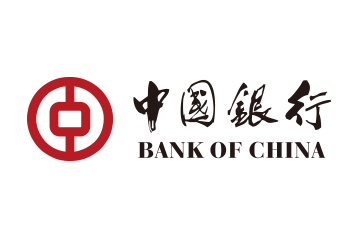


With the rapid development of China's social economy and increasingly close economic and trade exchanges with other countries in the world, the demand for trans-regional capital clearing has brought huge market development space for the bank's payment and clearing business.The payment business is free from the restriction of the deposit and loan ratio imposed by the regulator, with low market risk and the ability to generate long-term and stable bank fee income. It is the central link of the bank's capital operation and becomes one of the core business of global commercial Banks.In the 2008 financial crisis, the payment business has proven to have strong business support.Transaction banking, with payments as its core, can provide a stable source of income for the bank, thus gaining favor with the world's leading Banks.These Banks are accelerating the upgrading and upgrading of the payment system to increase their leading service capacity in the payment field and provide customers with faster, more convenient and more secure global payment and clearing services.The payment business can provide Banks with sufficient liquidity funds, reduce operational cost, improve customer service level and provide cross-selling opportunities for the business.The success of the bank in establishing a global unified payment system facilitates the provision of competitive value-added services to global customers to gain cost control, expedite compliance inspections, improve risk management and increase non-risky business revenue.By establishing a global unified payment platform, bank of China can assist Chinese customers to deploy global business. From the perspective of global operation management, bank of China can make full use of overseas network resources, actively face the competition from global commercial Banks, effectively control customer information, reduce the cost of remittance and improve payment efficiency
The global unified payment platform not only supports the bank of China's various payment and settlement businesses, but also can support sufficient liquidity management.Payment services include customer remittance, active debit, agent clearing, inter-bank funds transfer and other types of business.The payment message contains a variety of message formats such as SWIFT, central Banks and regional clearing systems.Business channels include counters, self-service terminals, online banking and other channels.It needs to be connected to the SWIFT system, the internal and external core system, the RMB inter-bank payment system, the usd/euro and other major currency clearing systems.Through the phased implementation of the pilot projects of boc overseas, the cross-border RMB clearing business can be supported in the future.Our team and Fundtech provide flexible, efficient and comprehensive solutions for boc's global payment business.This solution is based on the payment logic processing of the rule engine, the system architecture design of SOA, the message format of ISO20022 industry standard and the flexible integration layer architecture, which makes the whole payment platform forward-looking and extensible
The payment business is free from the restriction of the deposit and loan ratio imposed by the regulator, with low market risk and the ability to generate long-term and stable bank fee income. It is the central link of the bank's capital operation and becomes one of the core business of global commercial Banks.Transaction Banks, with the payment business as the core, can provide a stable source of income for Banks, so the transaction banking business is favored by more leading Banks.For example, citigroup's trading banking business had revenue of $9.6 billion in 2008, up 22% from a year earlier, and profits of $3 billion, up 34% from a year earlier.In the financial crisis of 2008, the payment business has been proved to be capable of rapid business recovery.Total global payments have been rising in recent years, with revenues of $654 billion in 2006, $805 billion in 2008 and $1.4 trillion expected in 2016, according to BCG's survey of global bank payments revenues.At the same time, revenue per paid transaction will gradually decline to $0.88 per paid transaction in the United States from an average of $0.94 per paid transaction in the United States, and to $7.50 per paid transaction for international payments from $9.3 per paid transaction.The number of transactions through SWIFT and TARGET2 around the world is also gradually decreasing.With the rapid development of payment business demand, Banks need more and more efficient payment system.In the field of payment business and corresponding payment system development, ten important industry development trends and best practices of IT system construction were realized in this project.To build a globally unified payment platform (IT architecture best practice). The payment platform USES an independent integration layer (IT architecture best practice) message format to use industry standards.Such as ISO 20022 (the best practices of IT infrastructure) using SOA architecture (IT infrastructure best practices) provide real-time monitoring and analysis of development trends of (industry) and cash management, supply chain financing business such as system integration, industry development trend) through flexible rule configuration to improve payment rty () industry development trend to use commercial software to solve the problem of the industry the standard () industry development trend for quality customers with personalized service for small and medium enterprises development trends of (industry) provide the best customer experience (industry development trend)